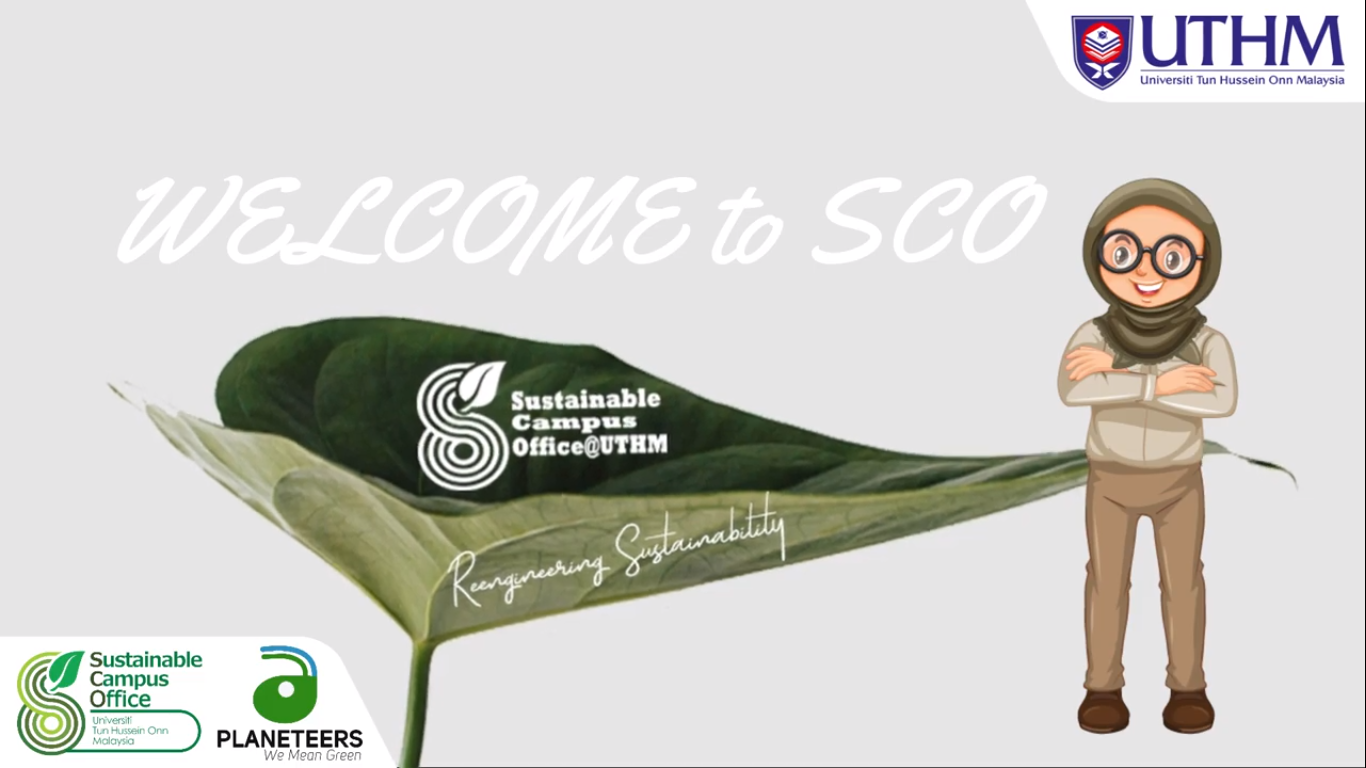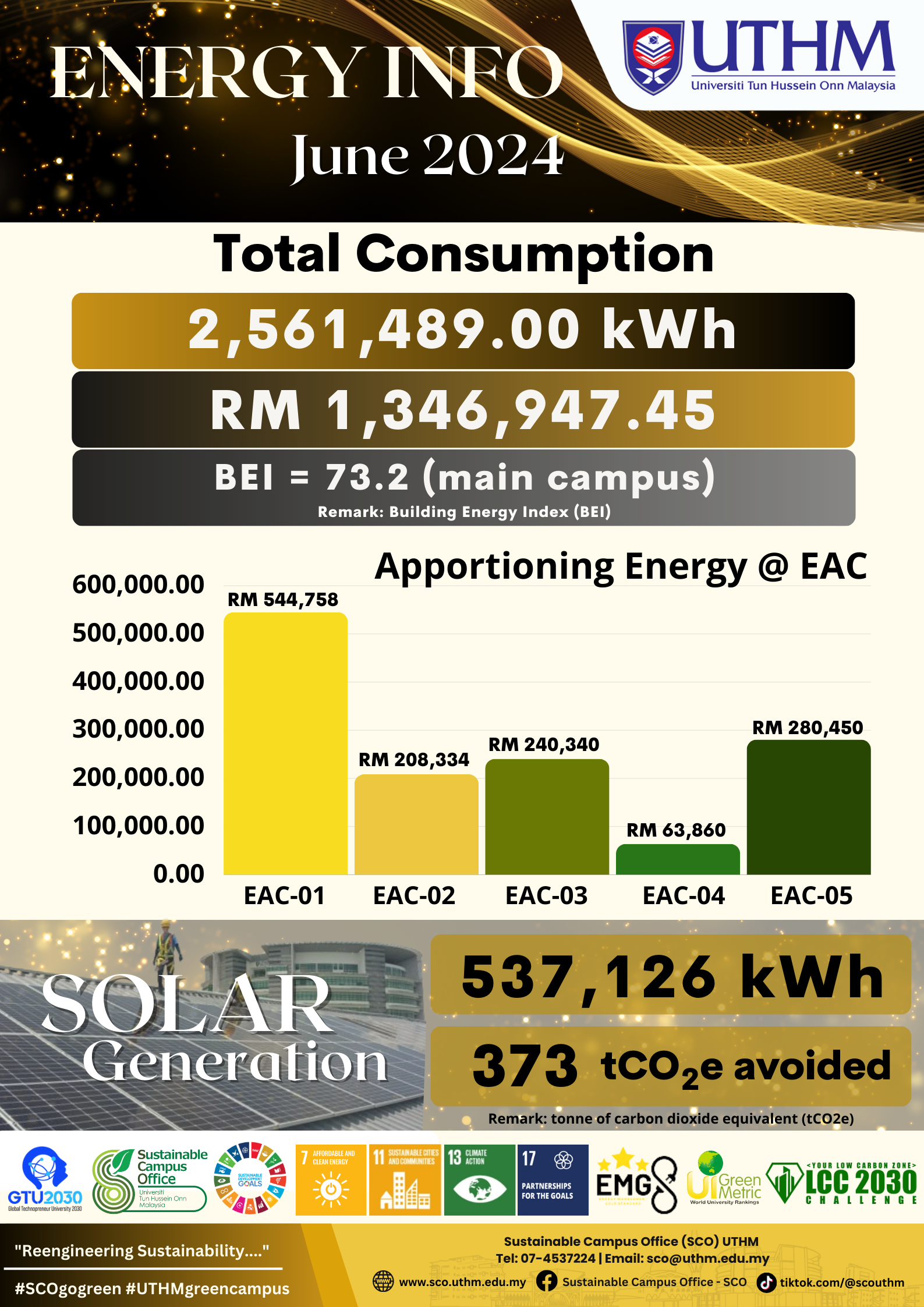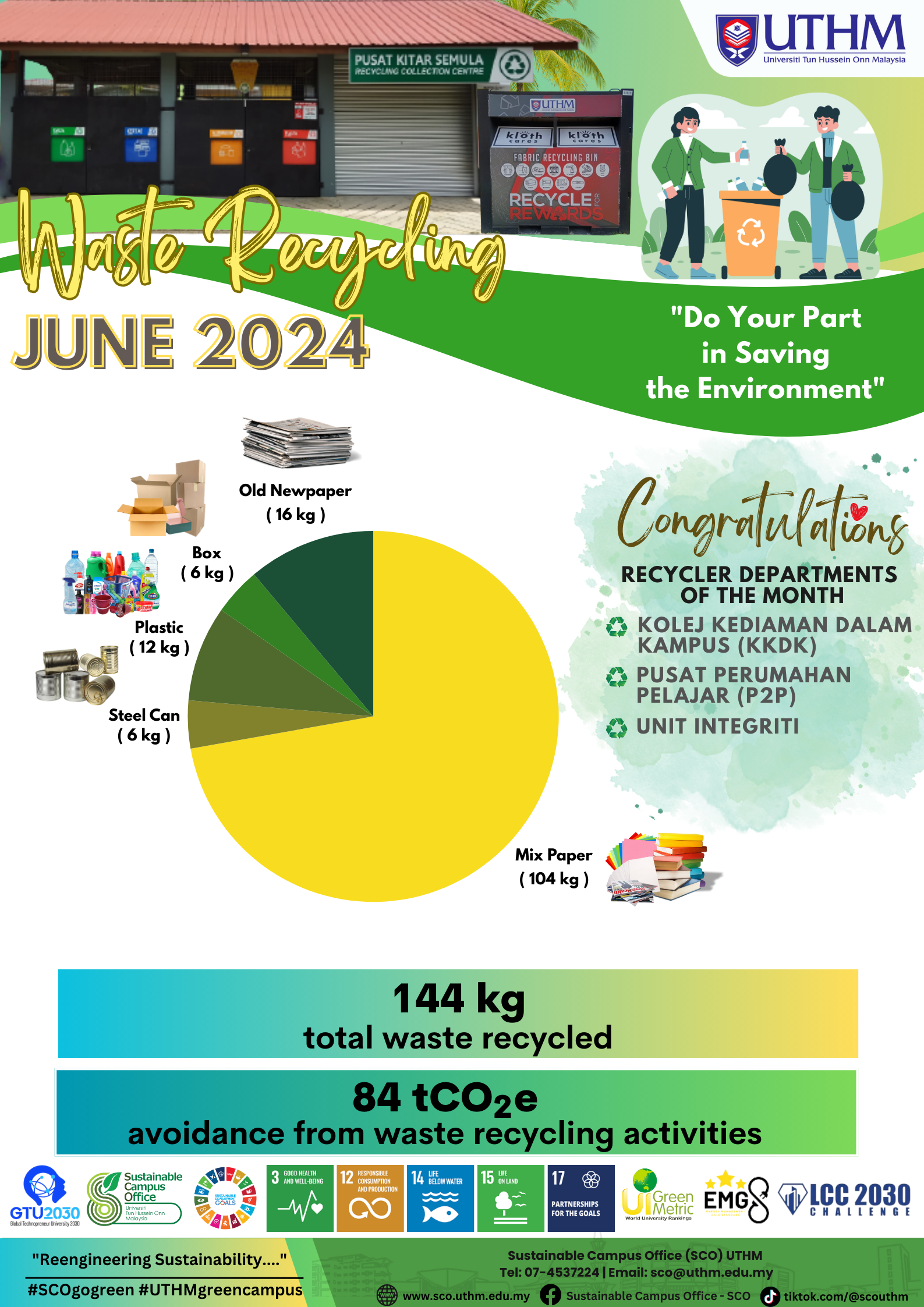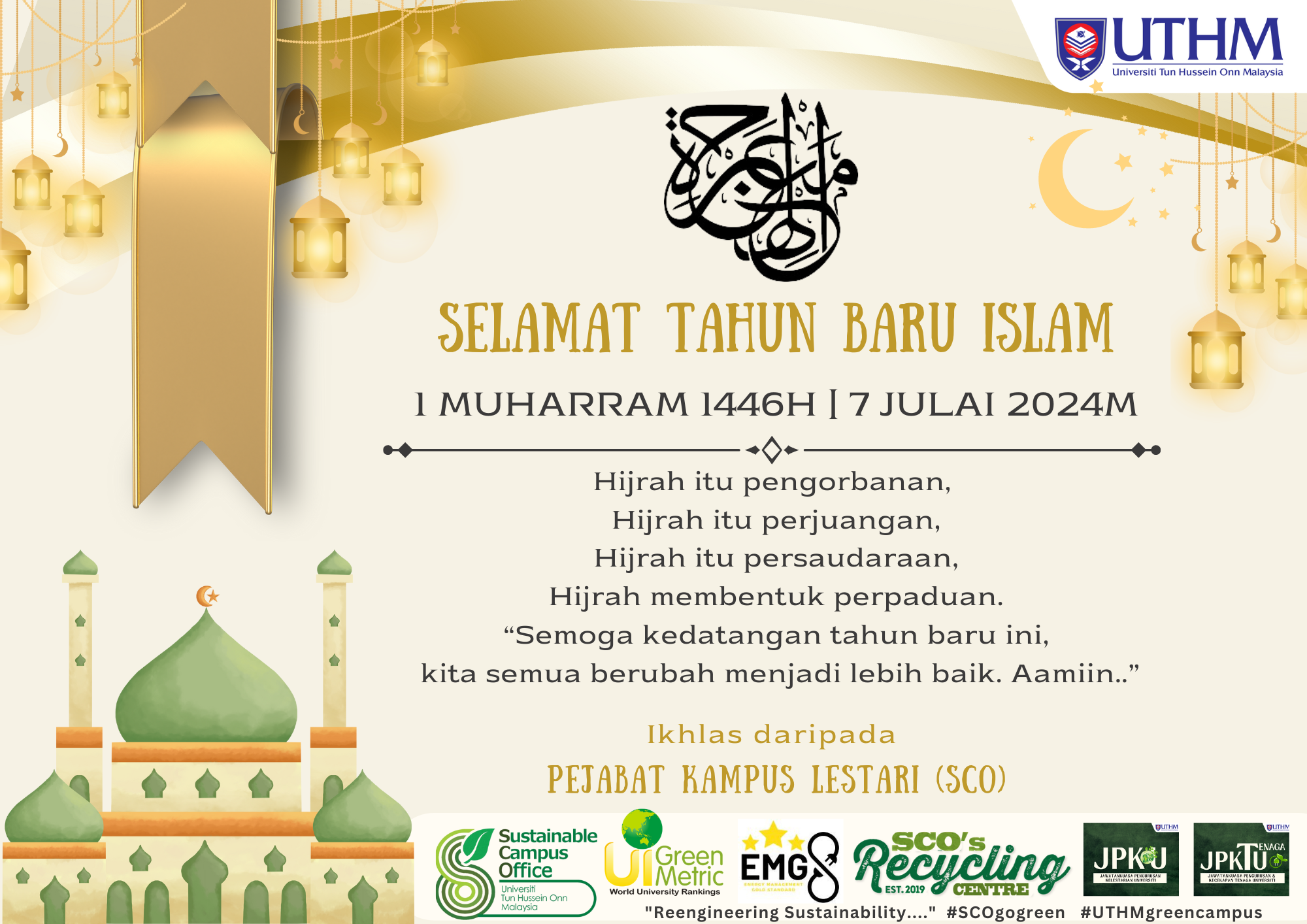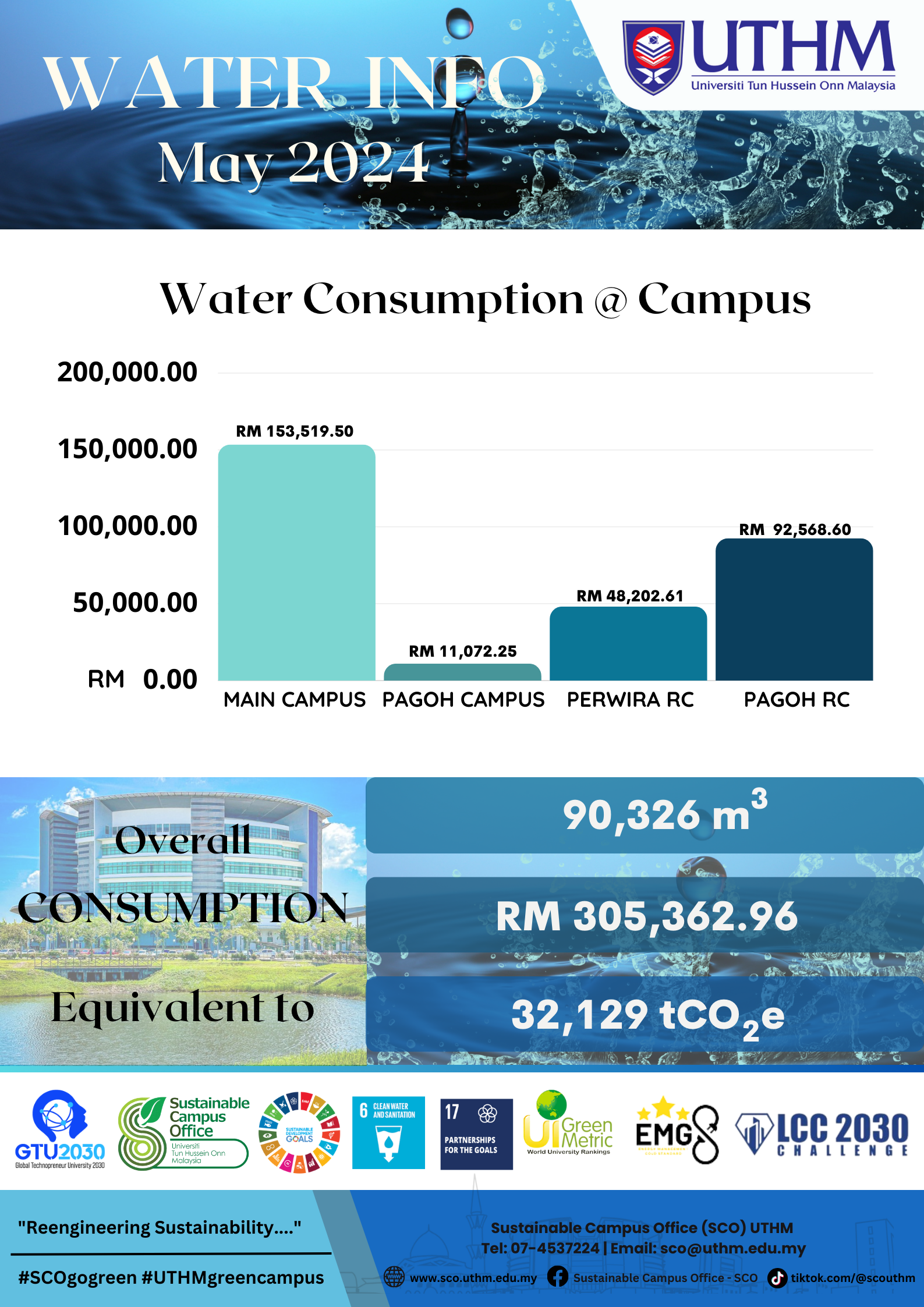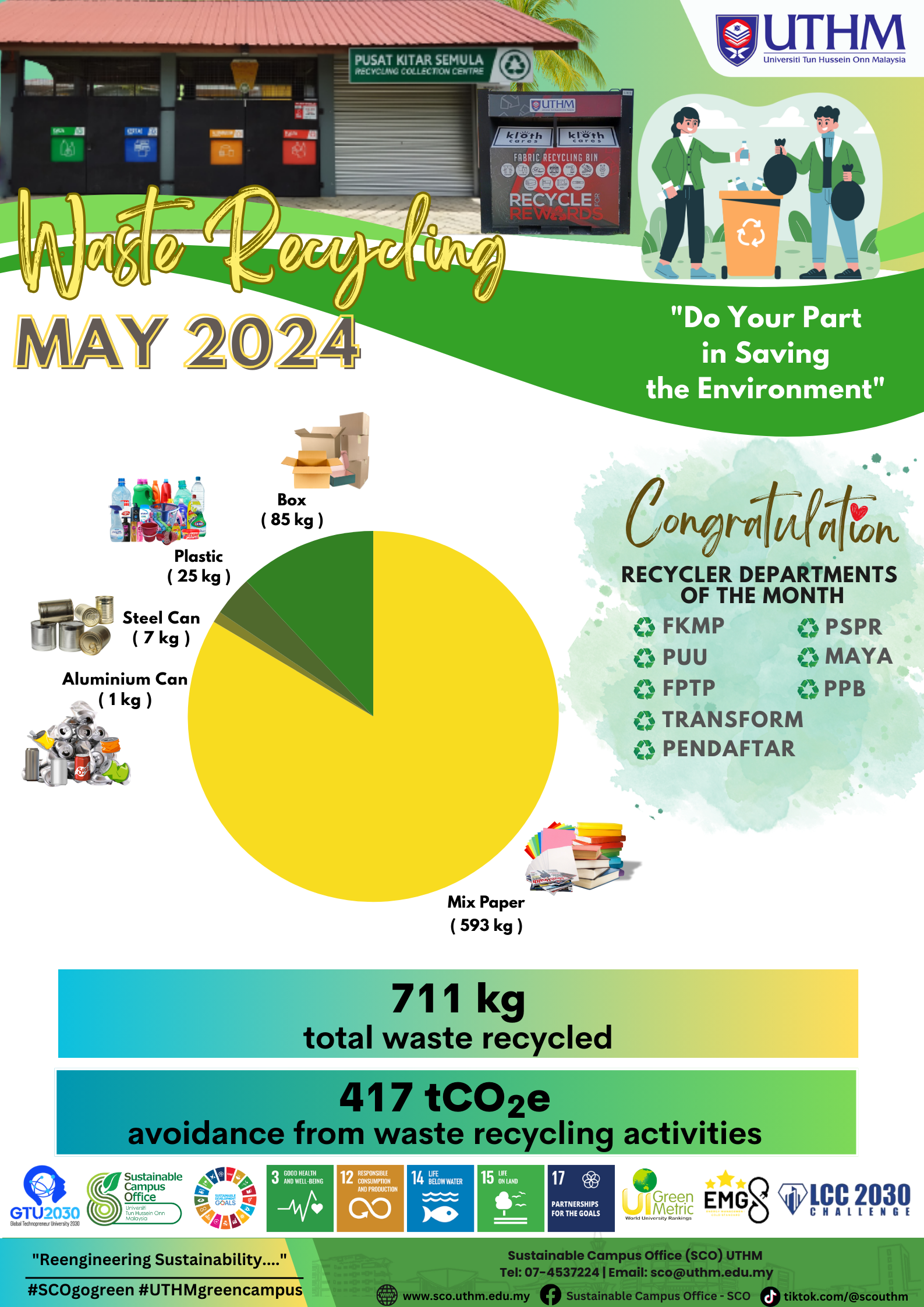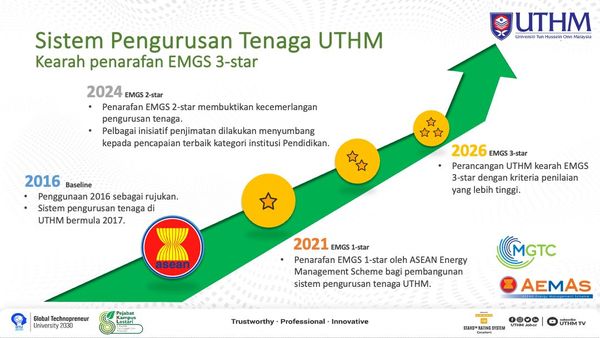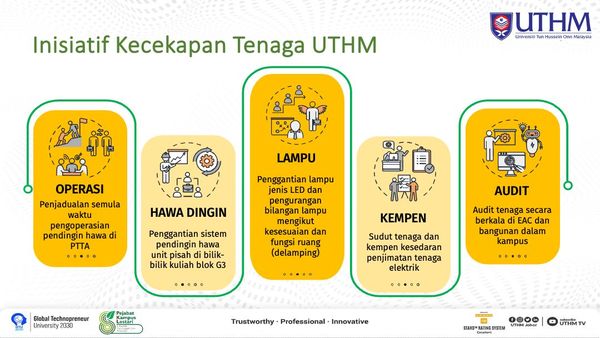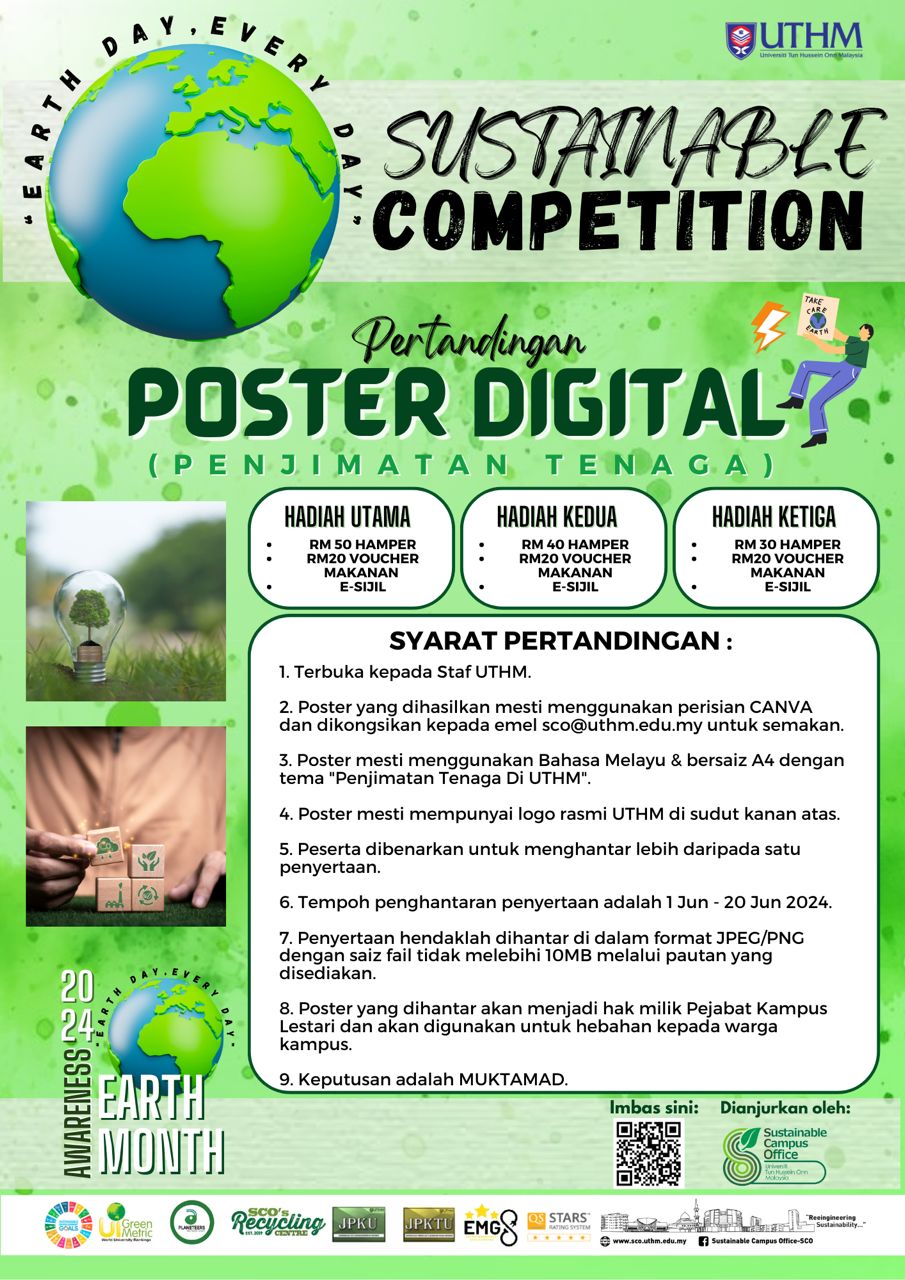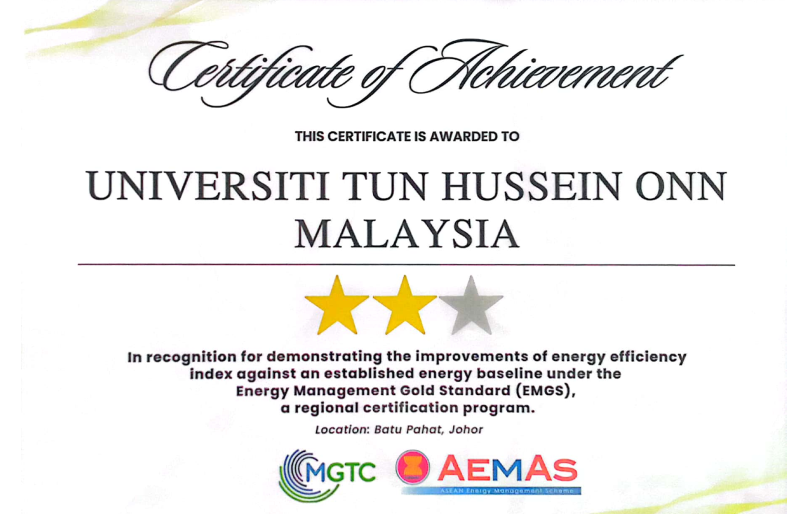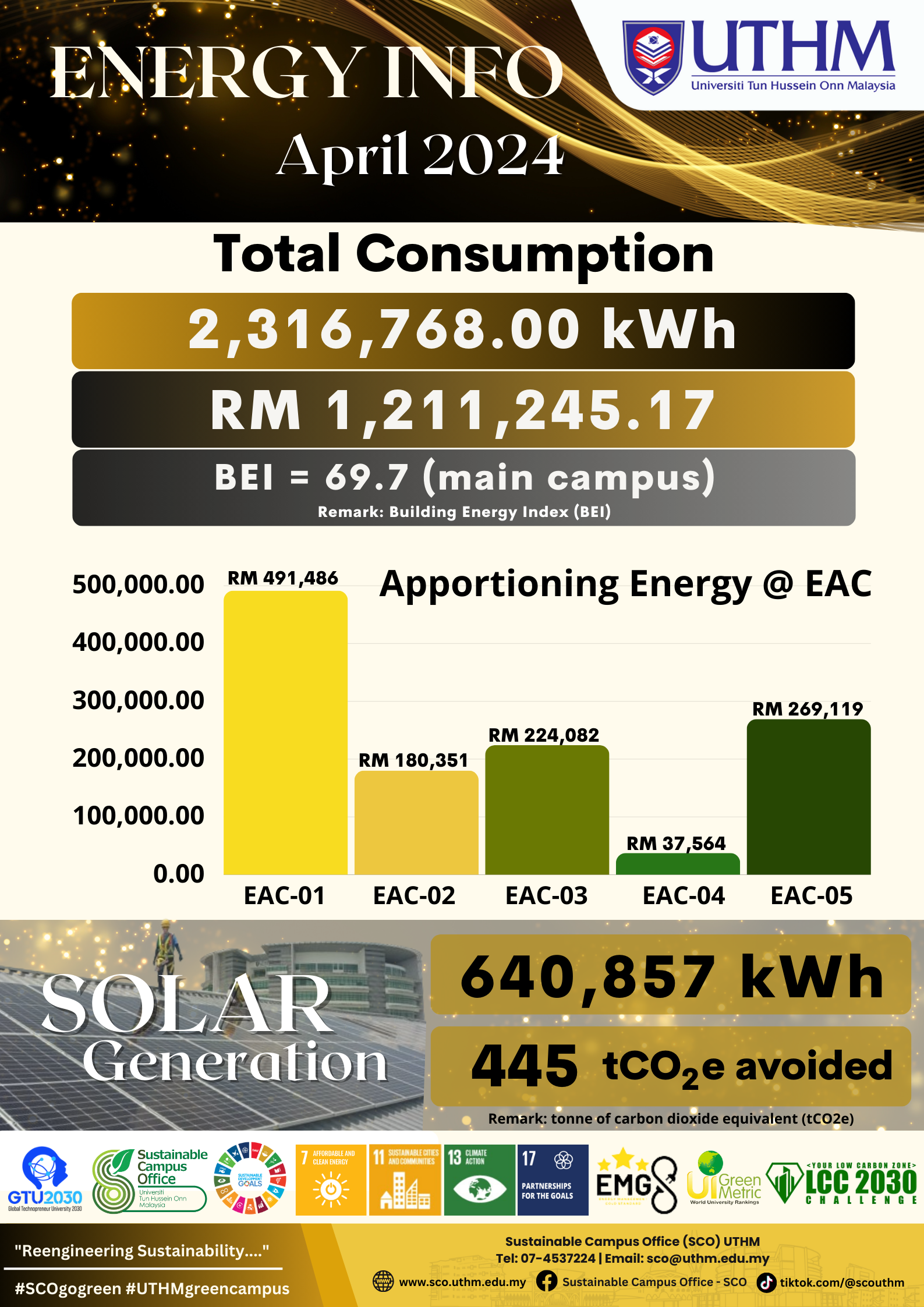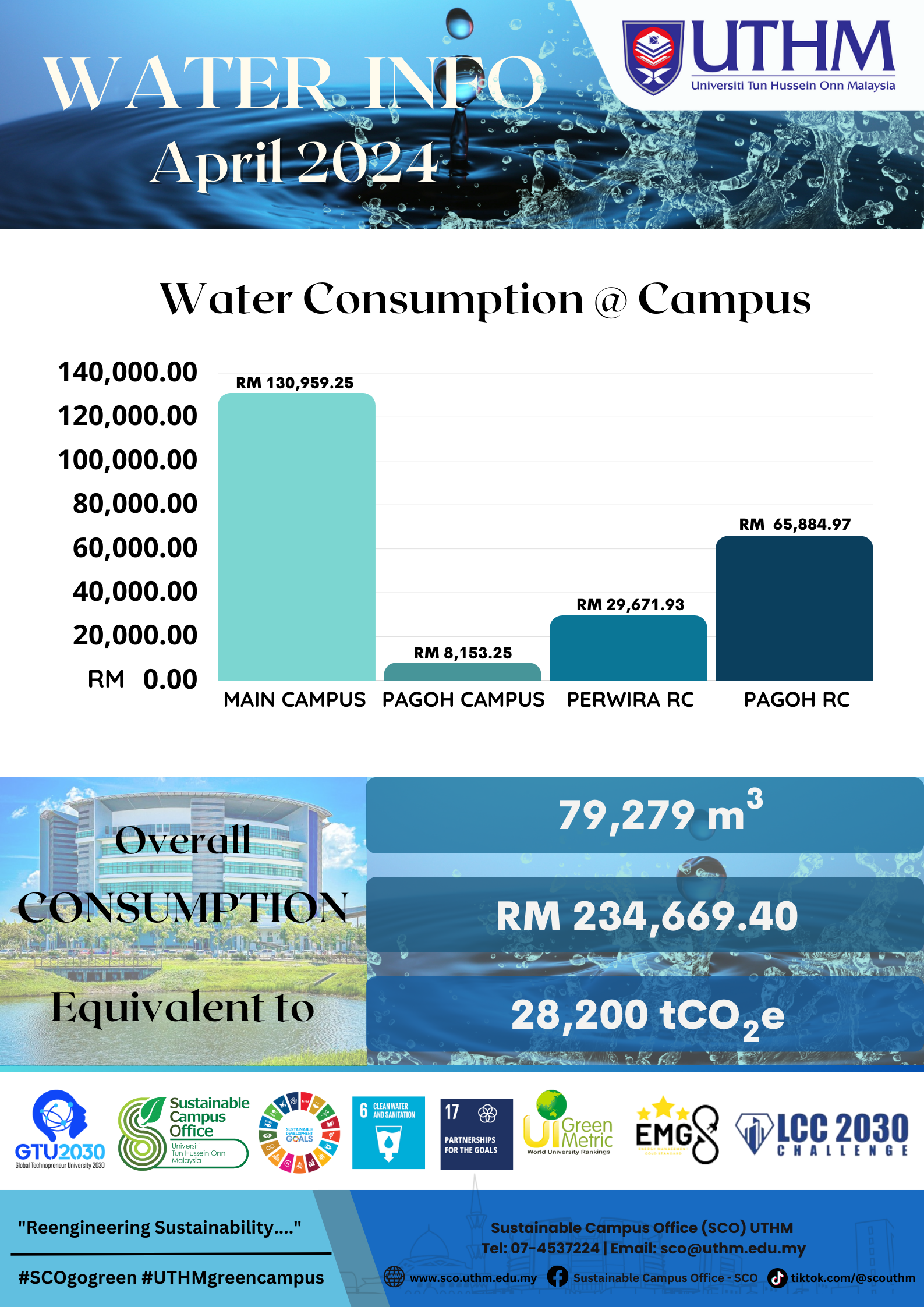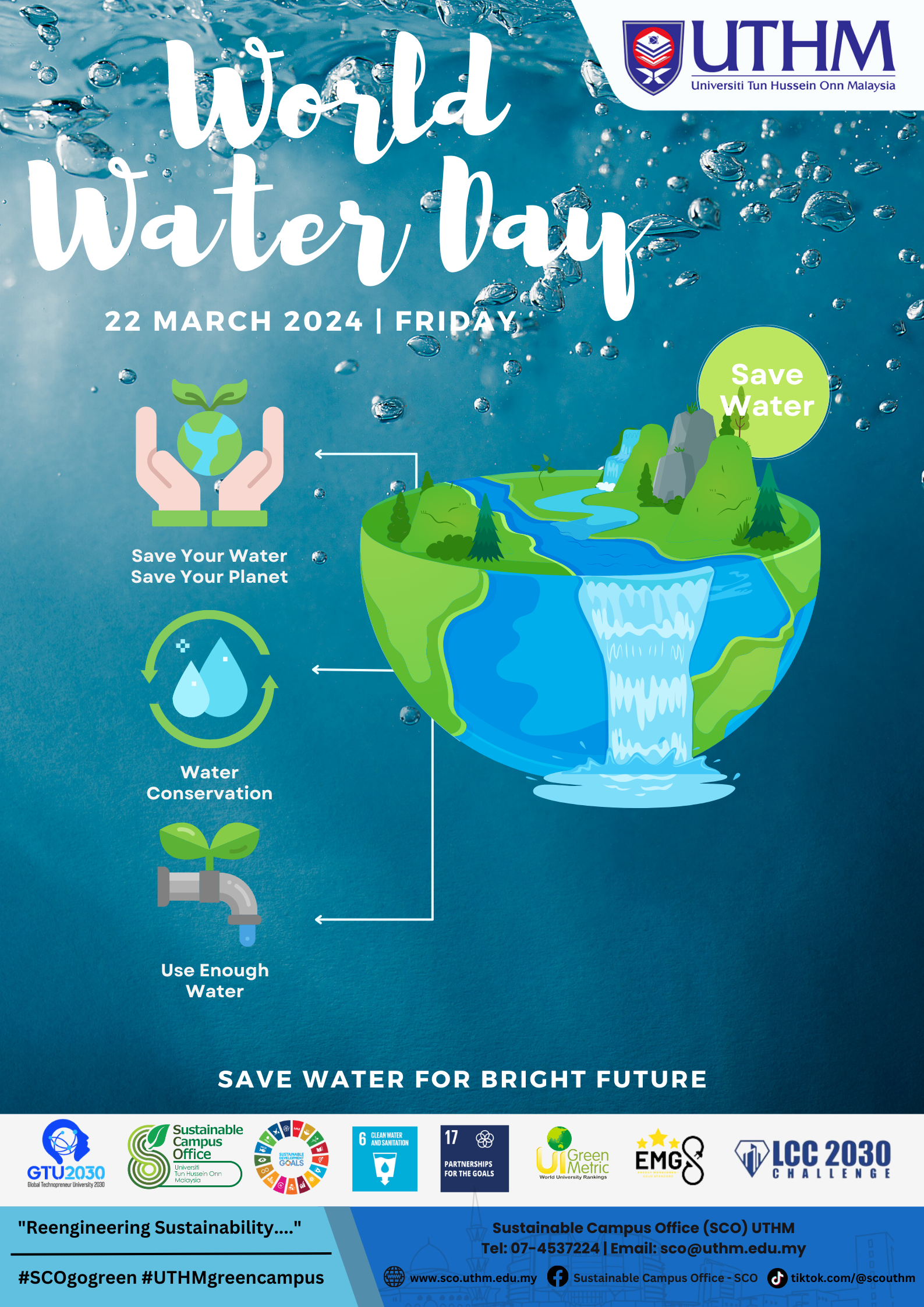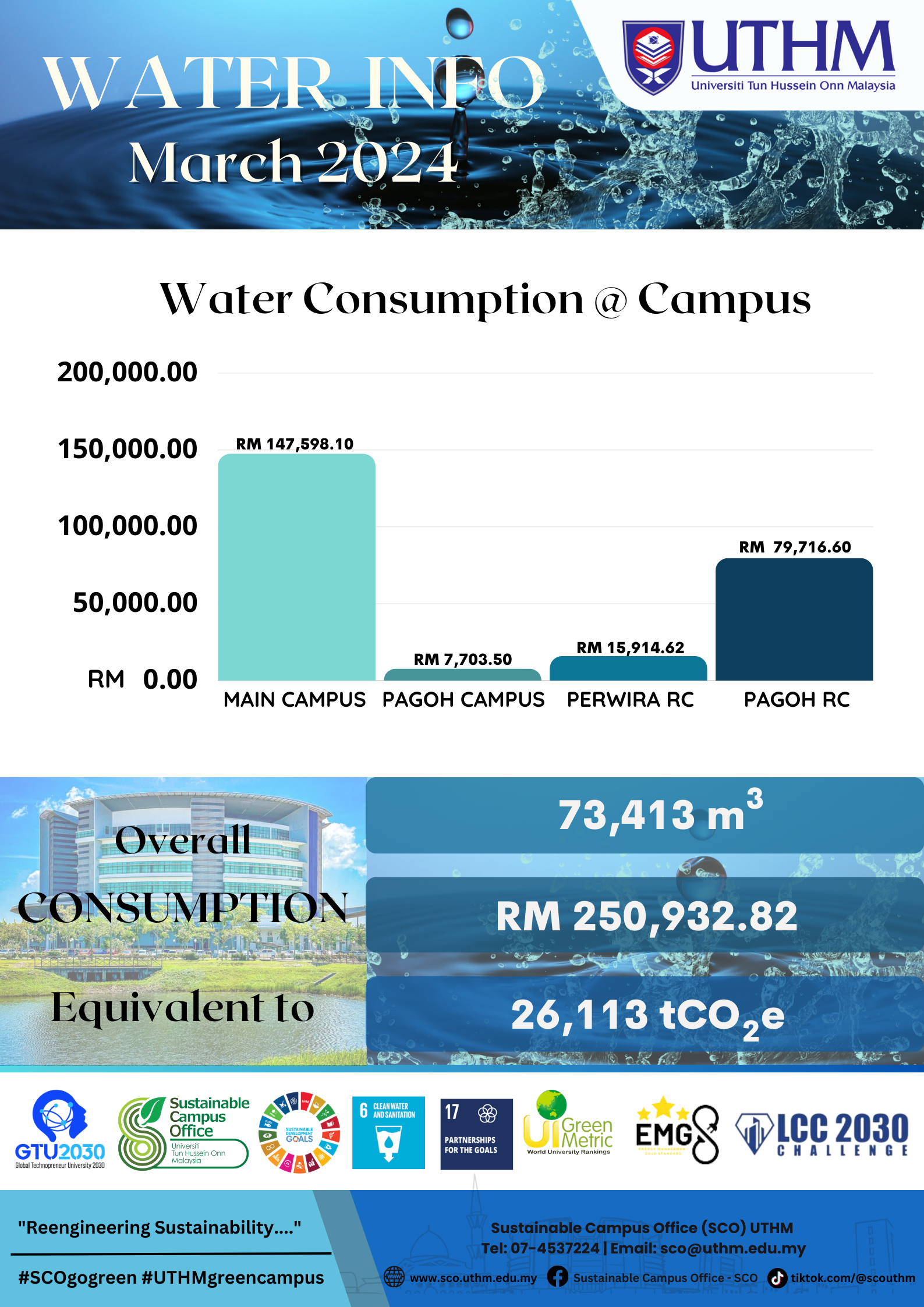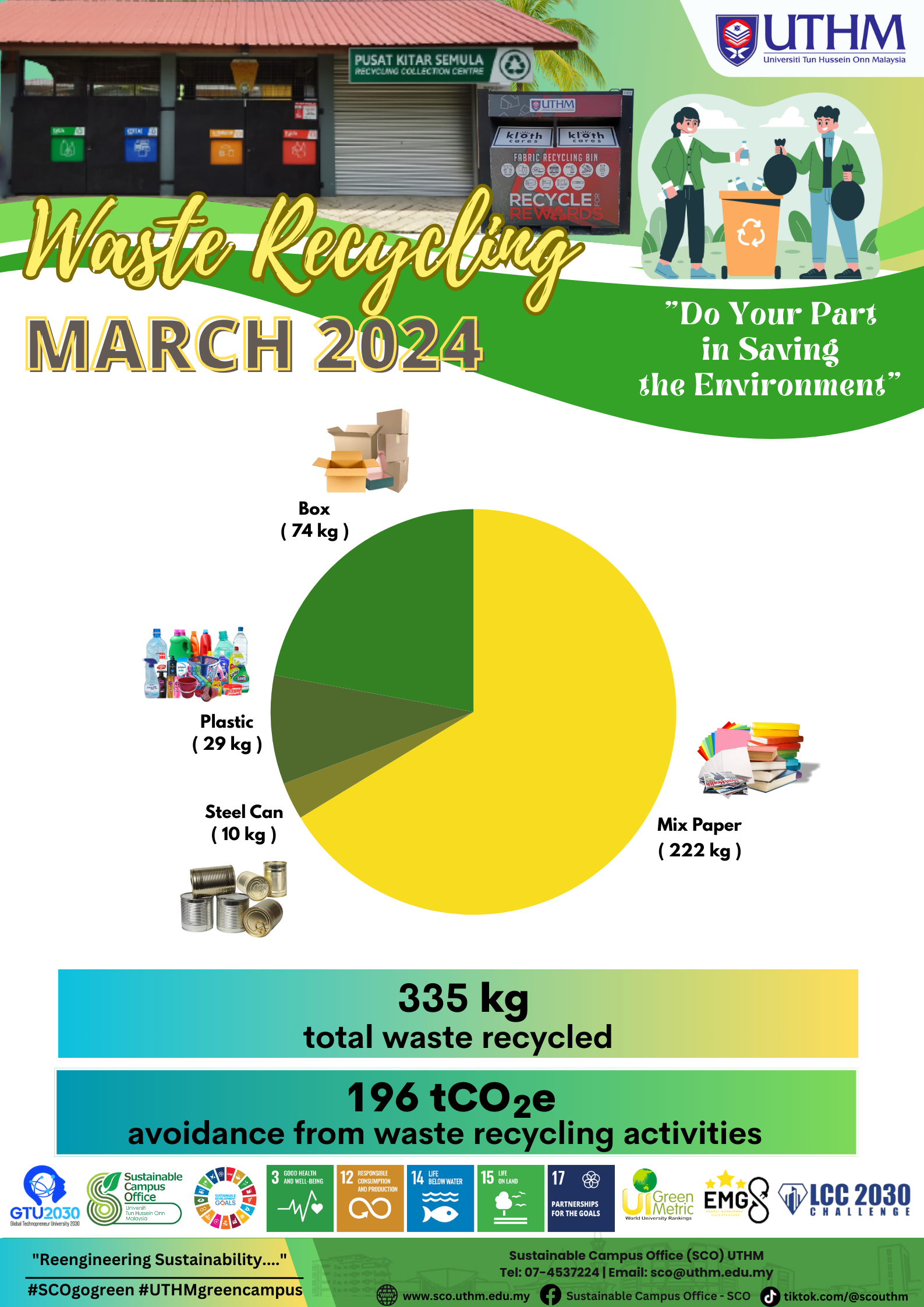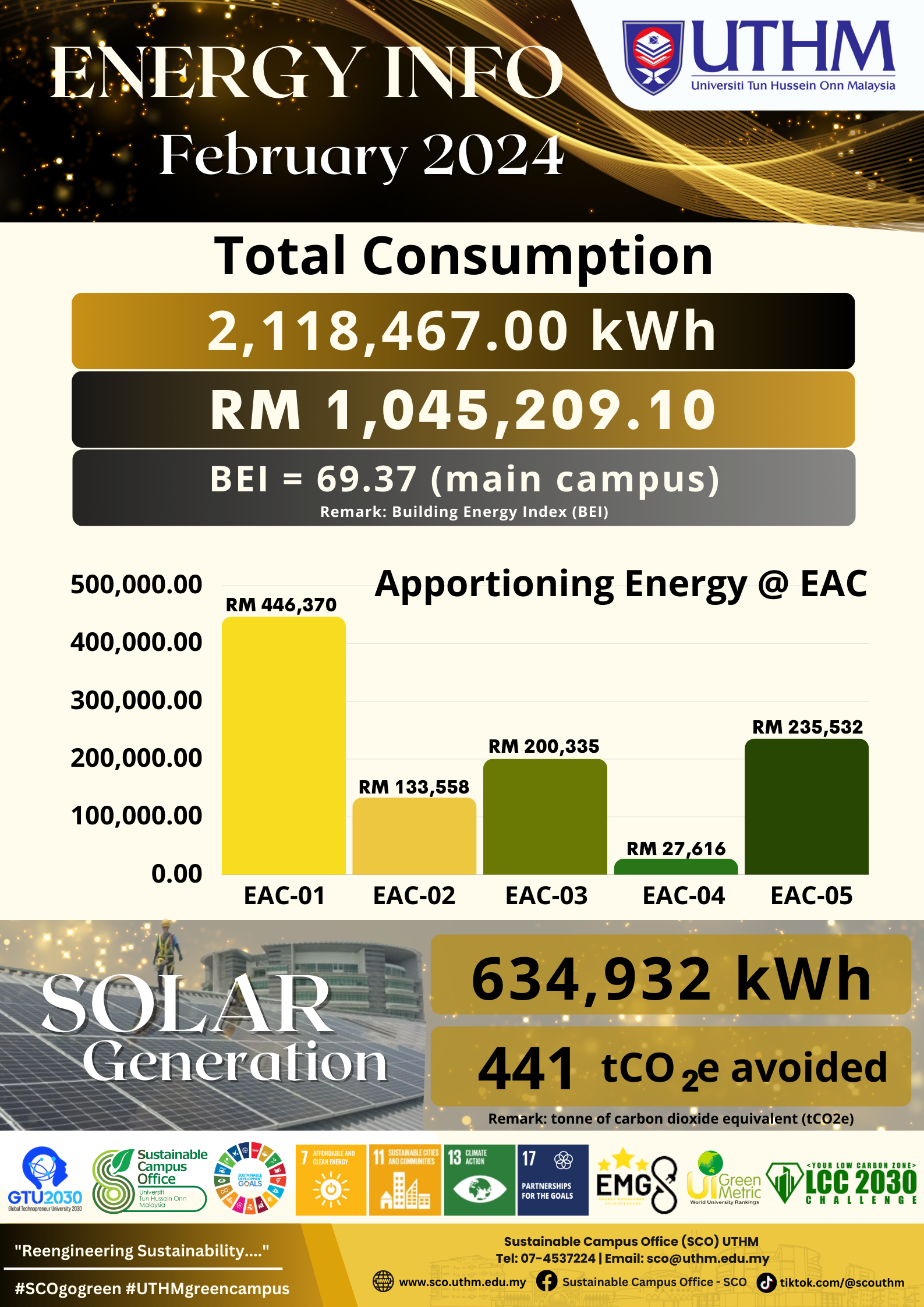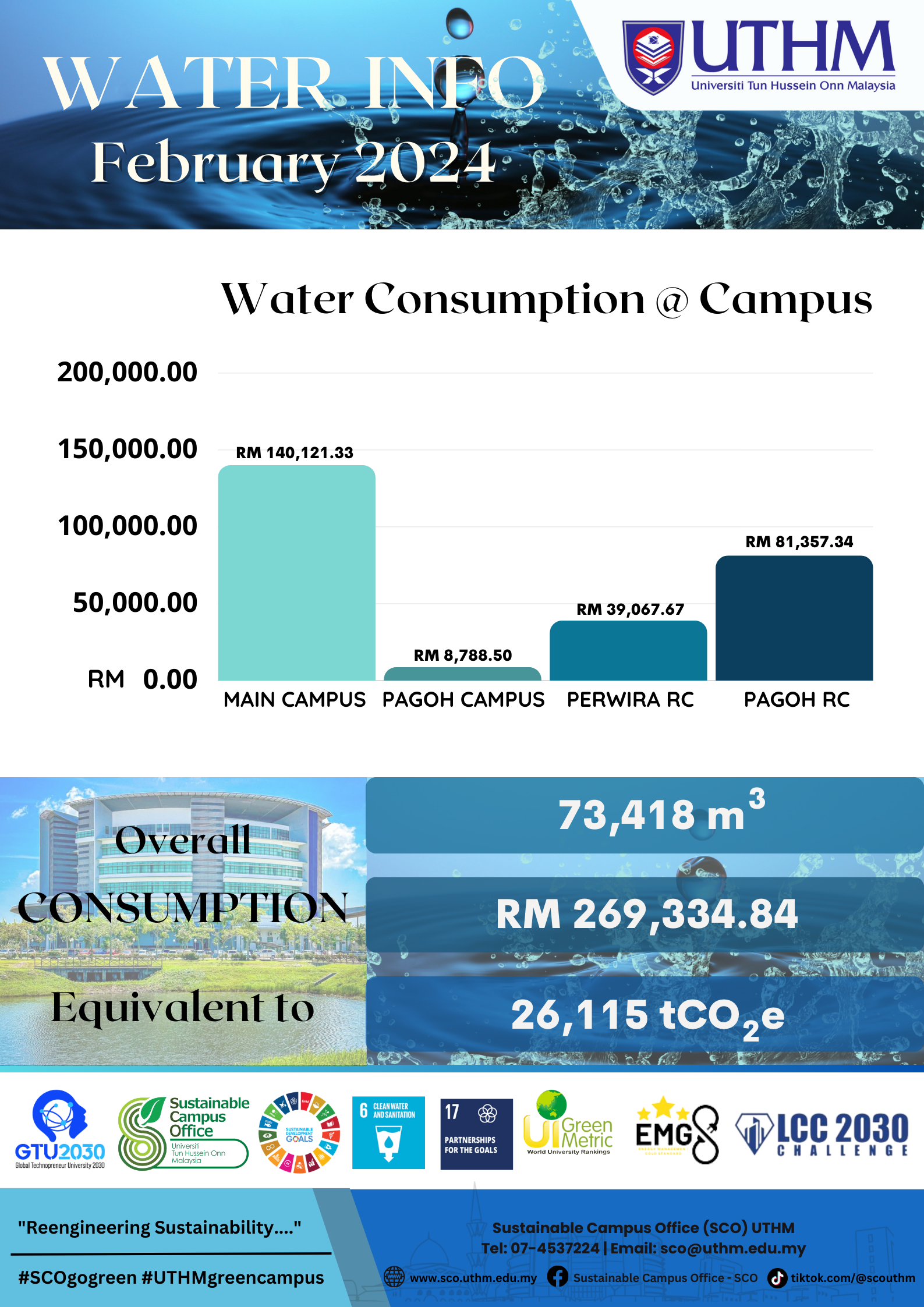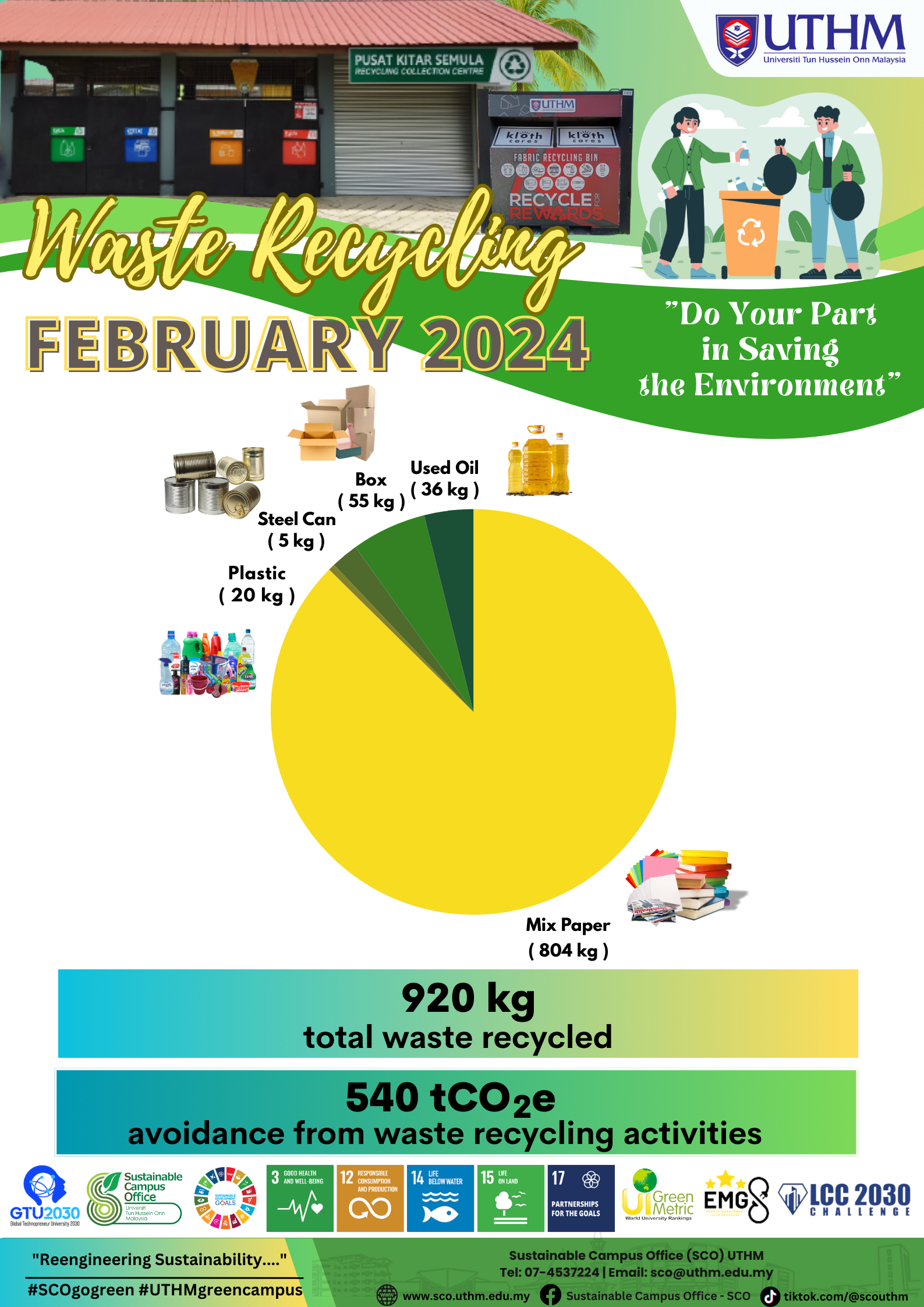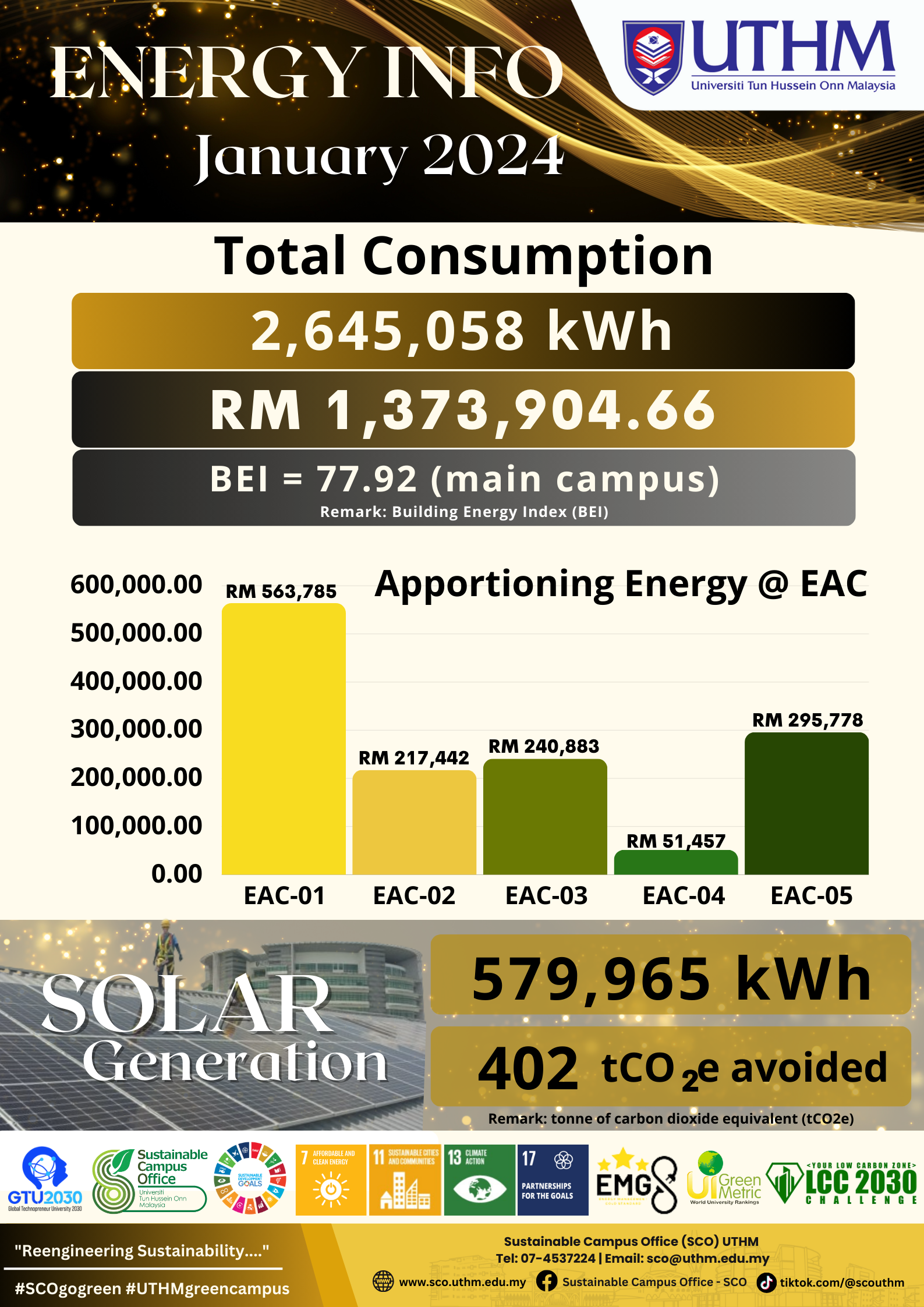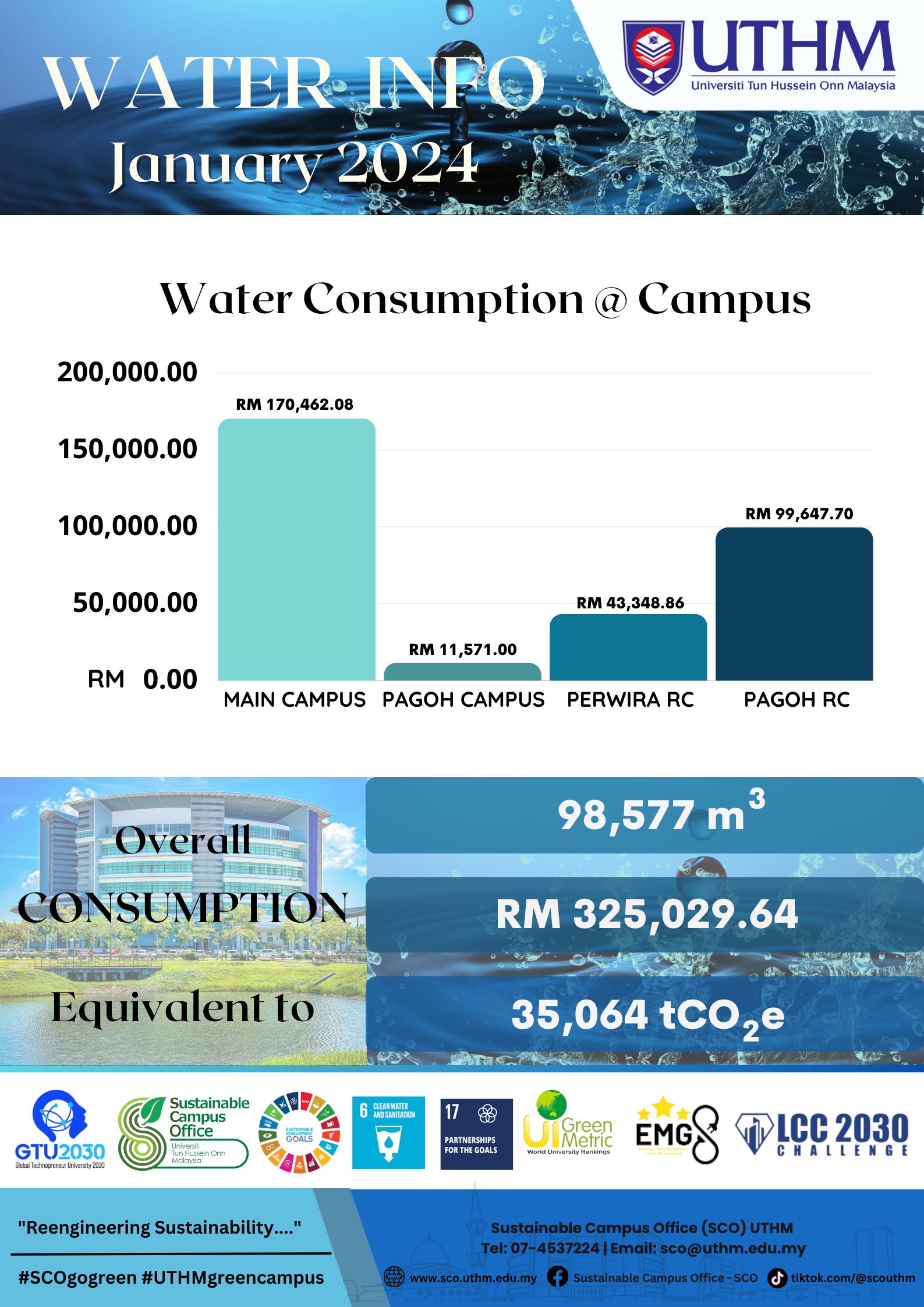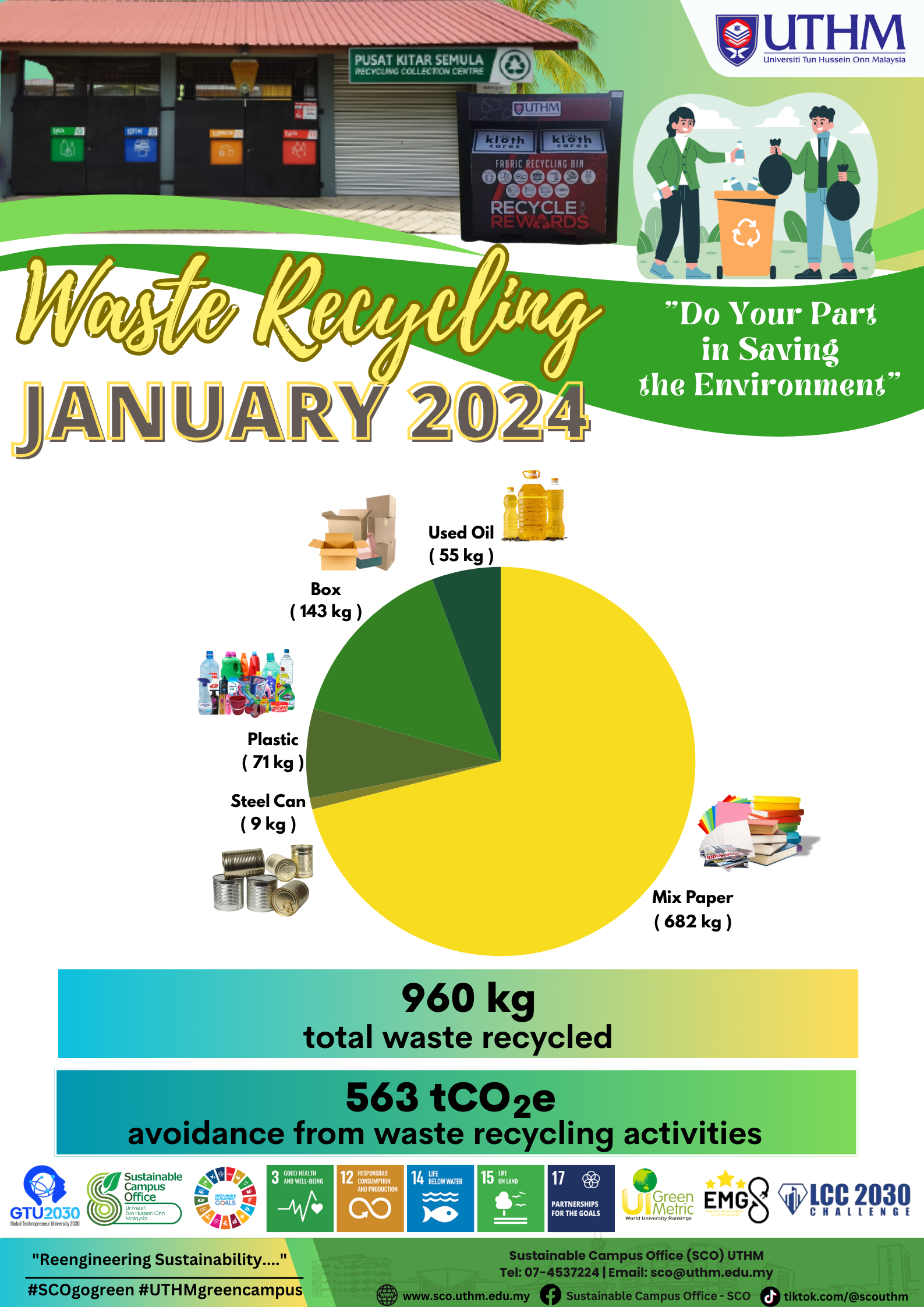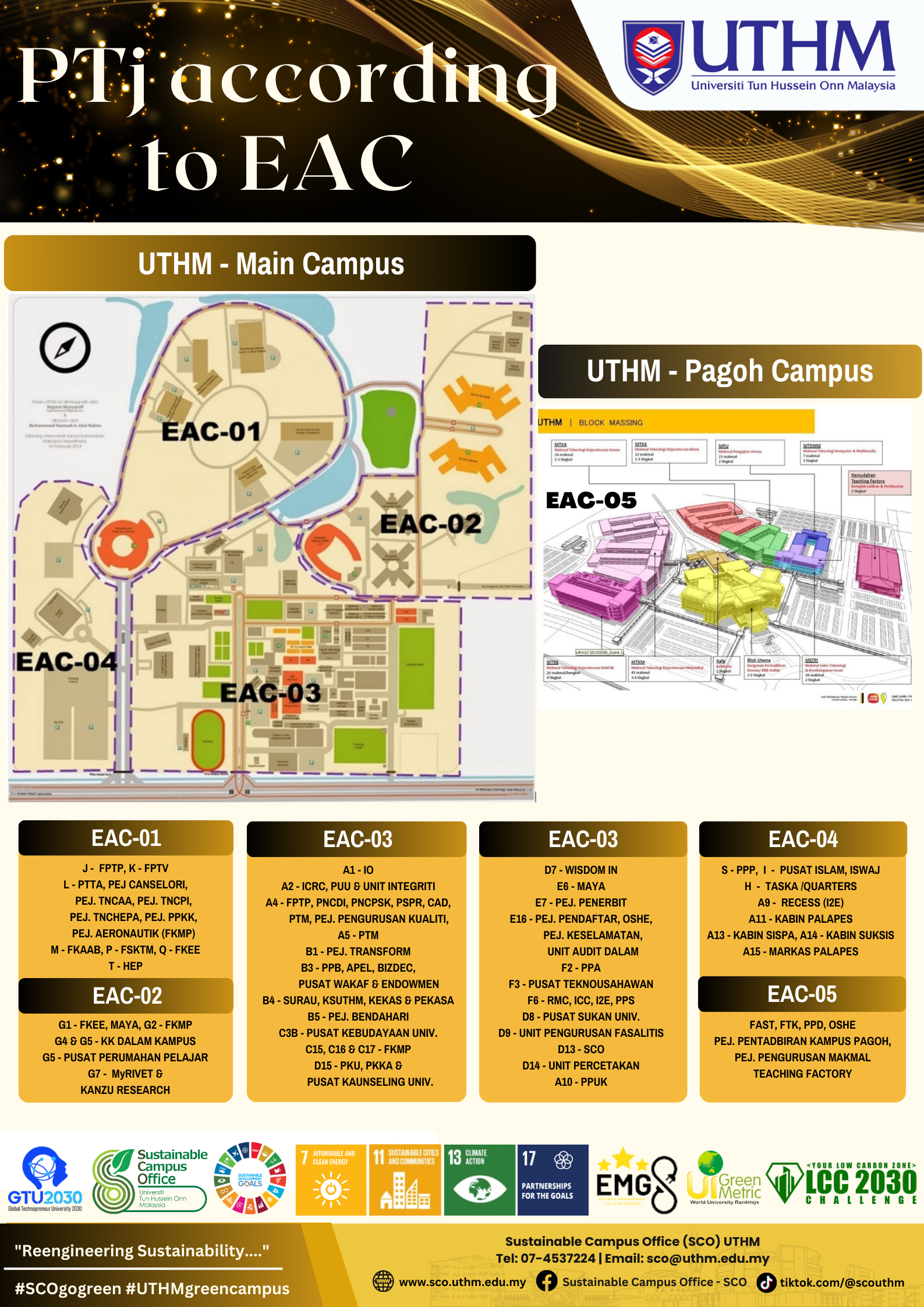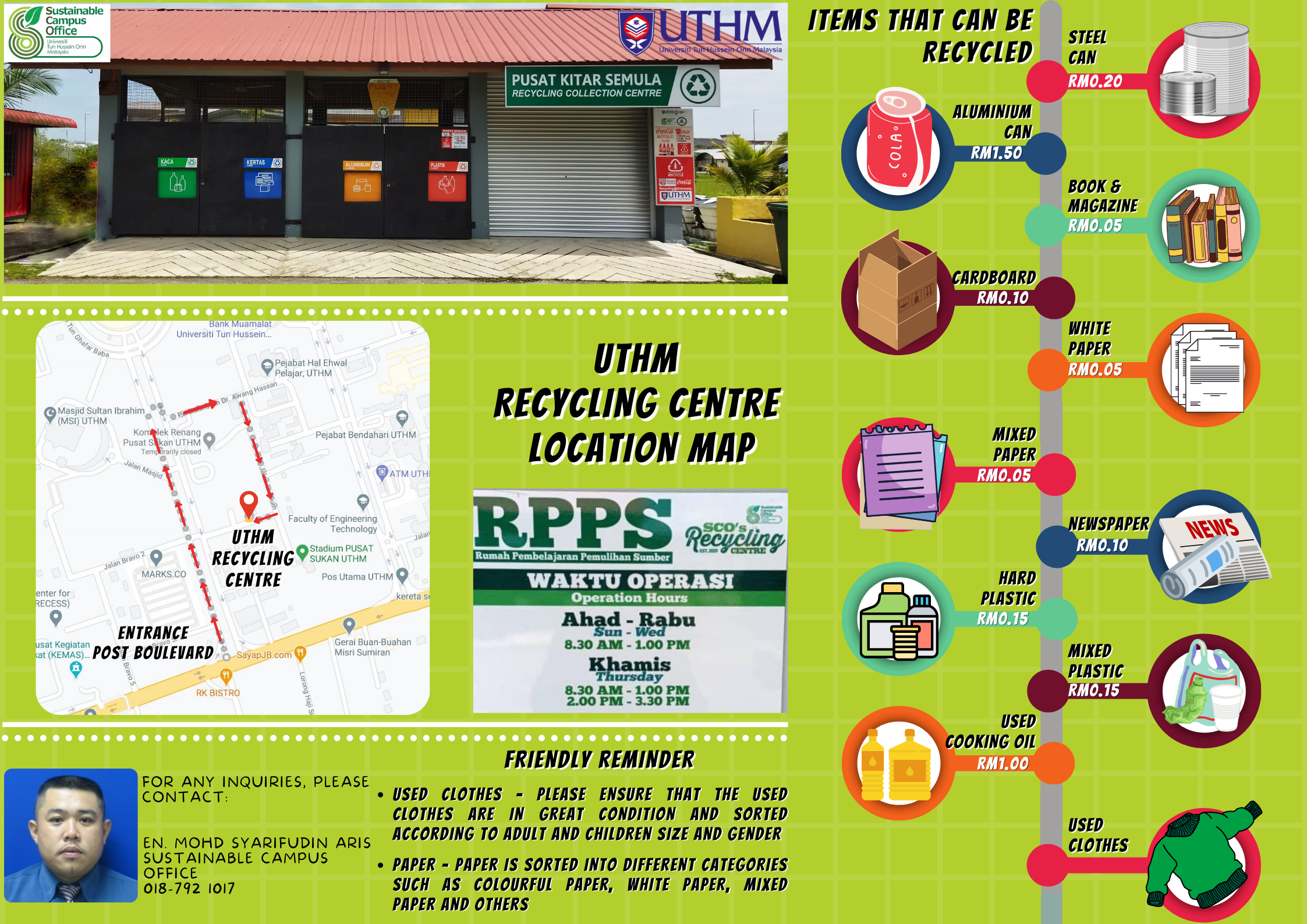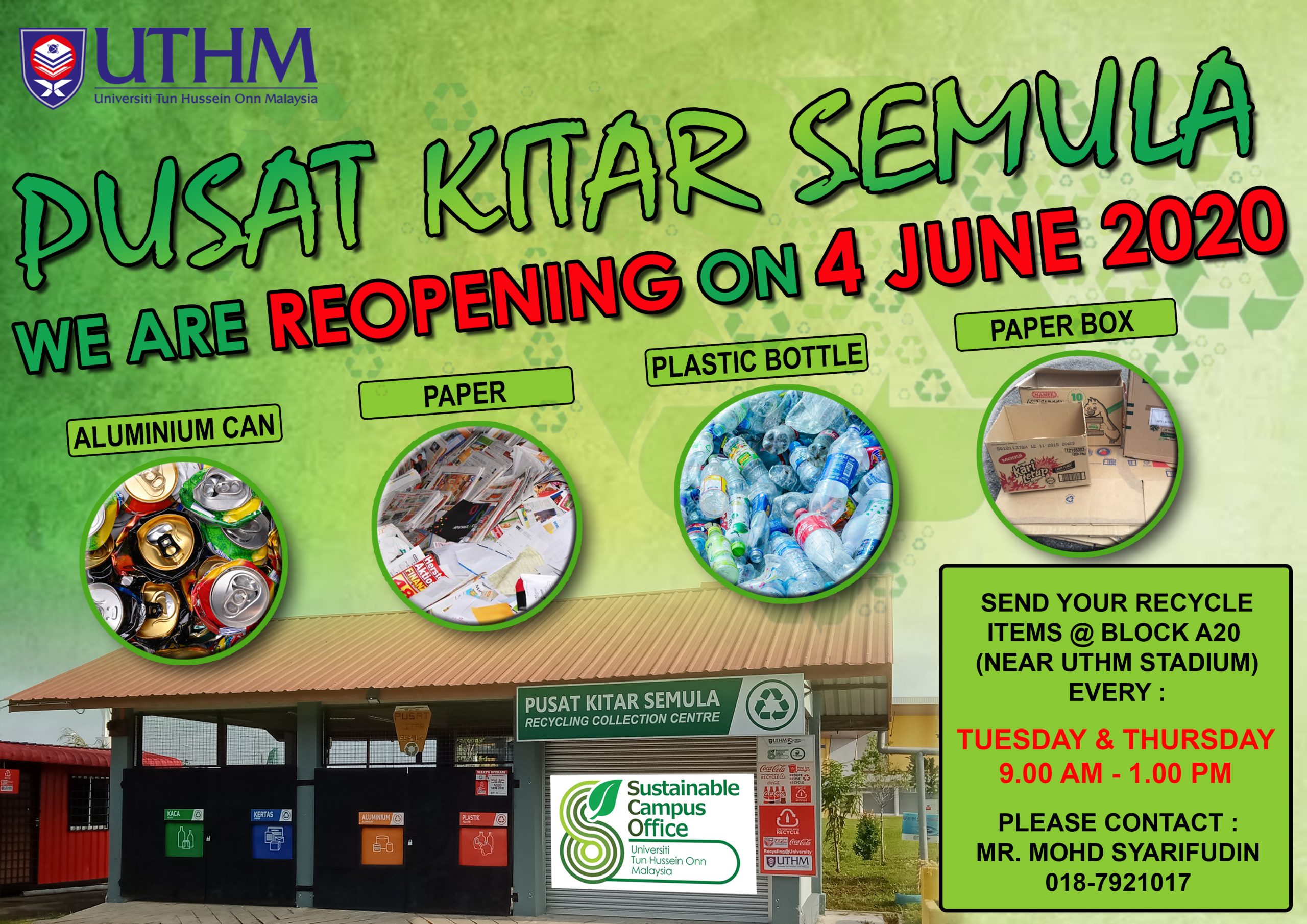SGP 4: Eco-Mosque Project (Recycling Ablution Water) – Progress Report
Introduction:
Ablution ritual usually takes up several minutes at a running water facility, allowing a considerable amount of water to go to waste when only handfuls of water are collected and used at each step of the ritual. Consequently, the ritual, when performed ‘wudhuk’ in musollas and mosques, especially during the Friday prayers, entails significant wastage of treated water. In UTHM the number of the population has increased annually. The population in UTHM has increased by 2,792 from 2011 to 2016. It can deduce that the increase of population has a parallel with water consumption in UTHM. The dramatic water consumption has increased by 569,434m³ to the year of 2017. In a bid to save water, efficient use of ablution water recycling may promote water savings strategy. Recycling of ablution greywater is preferable due to less contamination than other types of wastewater. Hence, the study is initiated to develop a smart wudhu recycling system entitled Eco-masjid for non-potable uses. The Eco-Masjid consisting of collecting, monitoring quantity and quality, isolation, hydroponic cultivation, fish farming and knowledge transfer in aquaculture. The project will contribute benefits; water savings, sustainability landscape and recreation activities for the youngsters as well as provide socio-economic enhancement. It is expected that 6.60 m3/day (6600 litres/day) water will be saved. The Eco-Masjid in UTHM will represent the first premier showcase in Malaysia to have a hydroponic cultivation and fish farming activities by using reuse ablution greywater. The reputation for UTHM continues to stack up, including community responsibility and sustainable innovation.
Research Assistant (RA): Akhtar Izzaty Binti Riwayat (GF190067)
Duration:
1/7/2019 – 30/6/2021
Objectives:
This study embarks on the following interrelating specific objectives:
1. to obtain quantitative information on temporal quantity and quality trends of the ablution greywater;
2. to maximizing the reuse of ablution greywater for the purpose of aquaculture and hydroponic cultivation; and
3. to design an eco-techno smart system of gravity and solar energy that will reduce electricity consumption via eco-friendly with techno-economic, sustainable and less maintenance.
Progress:
Objective 1: 100% done
Summary of objective 1: Objective 1 cover 3 phase which is the site observation, quality and quantity of ablution water. Site observation was conducted to identify the appropriate area for the study. Several factors were considered which is the location of the main hole, discharge point of ablution water, gravity, the pipeline of ablution water and piping system. While colored water is poured into the point drain in ablution place for confirmation of ablution water flow during site observation. However, this ablution water was not discharged directly to the drainage, as the pipeline for ablution water was connected with the pipeline from the nearest toilet before it discharges to the manhole. In addition, there is no separate meter for the mosque to determine the amount of water used each month. Thus, the survey on average daily attendance was conducted in verifying the average total number of people prays during semester and semester break especially during Friday prayers. Furthermore, the quality and quantity of ablution water were also determined to identify the ablution water characteristics and water consumption in the UTHM mosque. In addition, the characteristics of ablution water were also important to identify the appropriate treatment for ablution water before it can be used for the aquaponic system that will be implemented in this study. The amount of water consumption for ablution water used for a month is approximately 66.26 m3/month during semester break while 96.34 m3/month during the semester. Unfortunately, the water used for ablution is discharged directly without any recycle and reuse. COD, TSS, TDS, Temperature, pH and Turbidity was the common parameters selected to indicate the ablution water quality. Laboratory test on the selected parameters verifies that the mean values of the parameter is not much polluted and were lower compared to National Water Quality Standard (NWQS) for Malaysia except for pH with 9.77 which is slightly higher than standard.
Objective 2: 60% done
Summary of objective 2: The new pipeline was installed by the appointed contractor as to extract and pumped out the ablution water before manhole as to avoid it from mixing with greywater from the toilet. This is due to ablution water that did not discharge directly to the drainage, as the pipeline for ablution water was connected with the pipeline from the nearest toilet before it discharges to the manhole. The ablution water than will be store in the storage tank and will be used for plants watering around the mosque before it releases to the aquaponic system by the gravity method. The ablution water is next filtered to remove sediments and other fine particles and an appropriate treatment method will be implemented to treat the quality of ablution water. The treated water is now ready to be distributed for the purpose of aquaponic activities. The aquaponic system was design based on the constraint of the area and the location to pumped out the ablution water and it was customized by the appointed supplier. In addition, this aquaponic block was custom made by pallet wood that easy to install or re-install, economical with simple fixtures needed. Thus, it can be replaced easily when this system was not required anymore. Furthermore, inside of the manhole which is the area for the collection of ablution water for women and men is also cemented on the water outlet to hold the water before being pumped out and stored in a storage tank and sensors will be installed to prevent the water from overflowing out from the manhole.
SGP4 Activity File: 1597125756-Photo-of-activities-SGP.pdf
